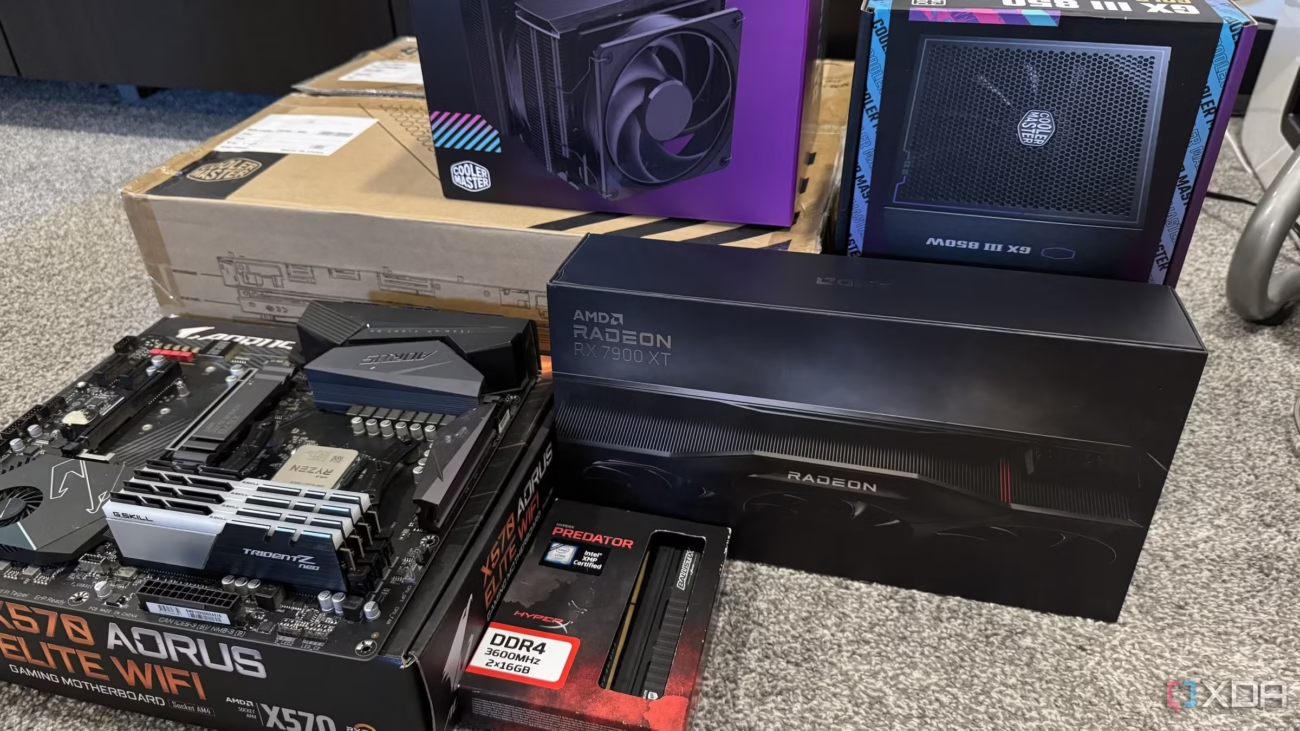Building your own PC is a thrilling experience—personal, powerful, and often more cost-effective than buying a prebuilt machine. But even the most exciting projects come with pitfalls. From forgotten screws to incompatible parts, small mistakes can lead to big frustrations or even hardware damage.
Whether you’re a first-time builder or brushing up before your next build, this guide outlines the most common PC building mistakes and how to avoid them—saving you time, money, and stress.
1. Not Checking Part Compatibility
Why it matters:
One of the most frequent and costly errors is buying components that don’t work together.
How to avoid it:
- Use websites like PCPartPicker to build a compatibility-checked parts list.
- Ensure your CPU matches your motherboard’s socket (e.g., AM5 vs. LGA 1700).
- Check that your RAM speed and type (DDR4 or DDR5) are supported.
- Verify that your GPU fits in your case and that the power supply can support it.
2. Skipping BIOS Updates
Why it matters:
A new CPU may not work properly without an updated BIOS.
How to avoid it:
- Check your motherboard’s CPU support list on the manufacturer’s site.
- Use BIOS Flashback if your board supports it and you don’t have an older CPU to boot with.
- Always follow instructions carefully when flashing BIOS—interrupting the process can brick your motherboard.
3. Using Too Much or Too Little Thermal Paste
Why it matters:
Improper application leads to poor heat transfer, causing overheating or throttling.
How to avoid it:
- Use a pea-sized amount in the center of the CPU.
- Don’t spread it manually—the pressure of the cooler will distribute it evenly.
- Some coolers come with pre-applied paste—don’t add extra if that’s the case.
4. Installing RAM Incorrectly
Why it matters:
Your system may not boot or utilize memory in dual-channel mode if the RAM isn’t properly seated.
How to avoid it:
- Read your motherboard manual to find the correct RAM slots (usually slots 2 and 4 for two sticks).
- Push firmly until you hear a click on both ends.
- Avoid mixing RAM kits, even with the same specs—they’re not guaranteed to work together.
5. Forgetting to Connect Power Cables
Why it matters:
A missing cable—especially the 8-pin CPU or GPU power—can prevent your system from powering on.
How to avoid it:
- Double-check connections:
- 24-pin motherboard power
- 8-pin CPU power
- PCIe power cables for GPU
- Modular PSUs make cable routing easier—use the correct labeled ports.
6. Poor Cable Management
Why it matters:
Messy cables obstruct airflow, collect dust, and make future upgrades difficult.
How to avoid it:
- Route cables behind the motherboard tray.
- Use zip ties or Velcro straps to bundle excess cables.
- Plan cable runs before installing the motherboard or GPU for easier access.
7. Not Planning for Airflow
Why it matters:
Poor ventilation can cause high temperatures, noise, and reduced lifespan for components.
How to avoid it:
- Use a balanced setup of intake and exhaust fans (e.g., 2 front intake, 1 rear exhaust).
- Make sure the CPU cooler isn’t blowing air against other fans.
- Don’t block airflow with hard drive cages or cables.
8. Ignoring PSU Quality
Why it matters:
A cheap power supply can fail catastrophically, damaging expensive components.
How to avoid it:
- Choose a PSU with at least an 80+ Bronze rating (Gold or Platinum preferred for gaming PCs).
- Use trusted brands like Corsair, EVGA, Seasonic, or Cooler Master.
- Get enough wattage—use PSU calculators to estimate power needs based on your build.
9. Static Electricity Damage
Why it matters:
Static discharge can instantly kill delicate components without any visible signs.
How to avoid it:
- Build on a non-carpeted surface.
- Use an anti-static wrist strap, or at least ground yourself by touching a metal part of the case often.
- Avoid building during very dry weather if possible.
10. Forgetting to Remove Case Stickers or Shields
Why it matters:
Leaving plastic stickers on coolers or I/O shields can trap heat or cause improper contact.
How to avoid it:
- Remove all protective film from CPU coolers, case windows, and fans before powering on.
- Double-check the motherboard’s I/O shield is properly seated (or already pre-installed in modern boards).
11. Rushing the First Boot
Why it matters:
Powering on before everything is double-checked could damage parts or cause long troubleshooting sessions.
How to avoid it:
- Go through a final checklist before pressing the power button.
- Listen and observe: fans spinning, POST beeps or codes, and display output.
- Keep the side panel off temporarily to see all components during initial boot.
12. Not Installing Drivers or Updates
Why it matters:
Without the correct drivers, your system may underperform or experience bugs.
How to avoid it:
- Download the latest drivers from the GPU and motherboard manufacturer websites.
- Install Windows Updates and chipset drivers.
- Set up performance software like NVIDIA GeForce Experience or AMD Adrenalin.
13. Not Budgeting for a Monitor or Peripherals
Why it matters:
It’s easy to forget these when focusing on internal parts.
How to avoid it:
- Budget for a monitor that matches your GPU power (e.g., 144Hz for RTX 4070+).
- Don’t overlook a quality keyboard, mouse, and headset—they affect your overall experience.
Conclusion: Build Smarter, Not Just Faster
PC building is a process that rewards attention to detail. By slowing down, double-checking compatibility, and following best practices, you can avoid common mistakes and enjoy a smooth, stress-free build. Whether you’re chasing high frame rates or just assembling a solid everyday machine, these tips will keep you on track.
Next up: “How to Install Windows and Drivers After Building Your PC”
